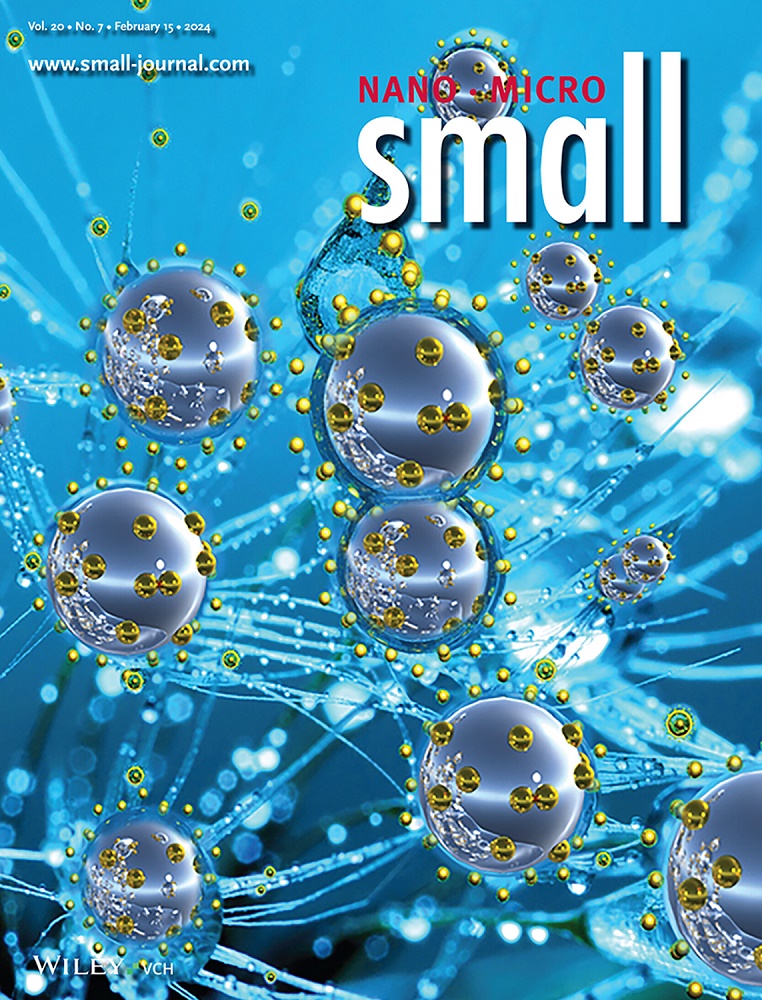An Electric Field-Enhanced Ultrahigh Energy Density Micro-Supercapacitors Printed by High Precision Maskless Photolithography.
IF 12.1
2区 材料科学
Q1 CHEMISTRY, MULTIDISCIPLINARY
引用次数: 0
Abstract
Micro-supercapacitors (MSCs) are crucial for powering micro-electromechanical systems (MEMS) and microelectronic devices due to their miniature size and high energy storage capacity. However, the achievement of printable high-energy-density MSCs with smaller size is still challenging. Herein, high-precision (2 µm) maskless lithography is utilized on Submicron (SU-8) photoresist successfully printing an ultrahigh energy density MSCs on silicon substrates with an effective electrode area of only 0.01 mm2. By incorporating the design of bent electrodes, the electric field strength between electrodes is greatly enhanced and leads to the improvements of device performance. The fabricated MSCs exhibit an unprecedently high area-specific capacitance of up to 2.13 mF cm-2 at a scan rate of 10 mV s-1, and excellent cyclic stability with the MSCs retaining 91.7% of their capacitive properties after 4000 cycles. Moreover, the MSCs achieve an ultrahigh energy density of 218 µWh cm-2, surpassing both traditional carbon-based MSCs and various hybrid MSCs. This work is expected to promote the broader application of MSCs in MEMS technology and microelectronic devices.高精度无掩膜光刻技术制备电场增强超高能量密度微型超级电容器。
微型超级电容器(MSCs)具有体积小、储能容量大的特点,是为微机电系统(MEMS)和微电子器件供电的关键器件。然而,实现可打印的小尺寸高能量密度MSCs仍然具有挑战性。本文利用高精度(2 μ m)无掩模光刻技术在亚微米(SU-8)光刻胶上成功地在有效电极面积仅为0.01 mm2的硅衬底上打印出超高能量密度的MSCs。通过结合弯曲电极的设计,大大增强了电极之间的电场强度,从而提高了器件的性能。制备的MSCs在扫描速率为10 mV s-1时表现出前所未有的高面积比电容,高达2.13 mF cm-2,并且具有优异的循环稳定性,在4000次循环后MSCs保持了91.7%的电容性能。此外,MSCs实现了218µWh cm-2的超高能量密度,超过了传统的碳基MSCs和各种混合MSCs。这项工作有望促进MSCs在MEMS技术和微电子器件中的广泛应用。
本文章由计算机程序翻译,如有差异,请以英文原文为准。
求助全文
约1分钟内获得全文
求助全文
来源期刊

Small
工程技术-材料科学:综合
CiteScore
17.70
自引率
3.80%
发文量
1830
审稿时长
2.1 months
期刊介绍:
Small serves as an exceptional platform for both experimental and theoretical studies in fundamental and applied interdisciplinary research at the nano- and microscale. The journal offers a compelling mix of peer-reviewed Research Articles, Reviews, Perspectives, and Comments.
With a remarkable 2022 Journal Impact Factor of 13.3 (Journal Citation Reports from Clarivate Analytics, 2023), Small remains among the top multidisciplinary journals, covering a wide range of topics at the interface of materials science, chemistry, physics, engineering, medicine, and biology.
Small's readership includes biochemists, biologists, biomedical scientists, chemists, engineers, information technologists, materials scientists, physicists, and theoreticians alike.
 求助内容:
求助内容: 应助结果提醒方式:
应助结果提醒方式:


